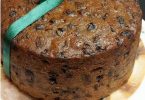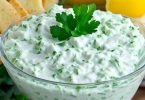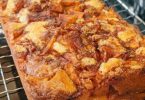Man, I’ve been doing it wrong this entire time
Before starting, make sure your pan is cool enough to handle. Cleaning a hot pan not only risks burns but can also warp the metal, particularly if you introduce cold water to a hot surface.
2. Add Water
Fill the burnt pan with enough water to cover the burnt area. You don’t need to fill the entire pan, just enough to submerge the charred section.
3. Add Vinegar
Pour in a cup or so of white vinegar into the water. Vinegar is acidic, which helps break down the burnt-on food without damaging the pan.
4. Bring to a Boil
Place the pan on the stove and bring the water and vinegar mixture to a boil. Let it boil for a few minutes. The combination of heat and vinegar will start loosening the burnt residue.
5. Add Baking Soda
Remove the pan from heat and carefully add a few tablespoons of baking soda. The baking soda will react with the vinegar, creating a fizzing action that helps lift the burnt residue from the pan’s surface. Let it sit for a few minutes to allow the reaction to work.
6. Scrub Gently
After the fizzing has stopped, use a soft sponge or non-abrasive scrubber to gently scrub the burnt area. In most cases, the burnt residue should come off easily at this point. If there are any stubborn spots, use a wooden or silicone spatula to scrape them off without scratching the pan.
7. Rinse and Inspect
Rinse the pan with warm water and inspect it. If there are still burnt spots, repeat the process or use a bit more baking soda directly on the stubborn areas and scrub gently.
8. Final Clean
Once all burnt residue is removed, wash the pan with dish soap and warm water as you normally would. Dry it thoroughly to prevent rust or water spots.
Why This Method Works
Vinegar and Baking Soda Power
Vinegar’s acidity works to break down the carbonized material while being gentle on the pan’s surface. Baking soda, on the other hand, is a mild abrasive and a natural cleaner that reacts with the vinegar to create carbon dioxide bubbles, which help lift off the burnt bits. This combination is powerful yet non-toxic, making it safe for both you and your cookware.
Heat
Heat helps to loosen the burnt residue by expanding the metal slightly and breaking down the bond between the burnt food and the pan. This makes the subsequent cleaning much easier.
Gentle Scrubbing
Using a non-abrasive scrubber prevents damage to the surface of the pan, ensuring that your cookware remains in good condition and lasts longer.
Tips for Prevention
1. Cook at the Right Temperature
Continued on next page
ADVERTISEMENT






